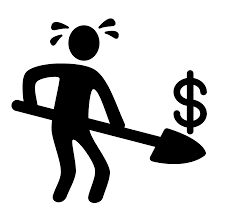by Dave Berkus, TCA Chairman emeritus
Investors love it when entrepreneurs draw little or no money from their startups. It extends the cash available for research and other necessary fixed costs and gives the fragile, young company more “runway” to get to breakeven.
What are you worth to the business?
But when forecasting the ultimate viability of a business, many times an entrepreneurial  founder uses a low, unsustainable salary rate for him or herself in order to show early breakeven. And that is the quandary for investors. If you had to replace yourself with a professional hired to duplicate your skills, what would you have to pay in salary and incentive today? That amount is almost always higher, much higher, than the amount budgeted for the entrepreneur.
founder uses a low, unsustainable salary rate for him or herself in order to show early breakeven. And that is the quandary for investors. If you had to replace yourself with a professional hired to duplicate your skills, what would you have to pay in salary and incentive today? That amount is almost always higher, much higher, than the amount budgeted for the entrepreneur.
A “messy” solution
You could start by charging more for your executive salary, then paying out less in cash, accruing the rest into a payable amount due to you in the balance sheet or plan. But that is a messy way to demonstrate that you are taking less than market wages from your company. Ultimately, the accrued difference will amount to a large enough liability that several things could happen, all of them negative.
What would the IRS think?
 The IRS could see that you are not paying yourself interest on the accrued debt, and consider it invested capital, eliminating your ability to repay yourself in the future. Worse yet, the IRS would then consider the accrued amount to be taxable income upon which no tax was paid, since the accrued labor as an investment has value that was not accounted for from previously taxed earnings.
The IRS could see that you are not paying yourself interest on the accrued debt, and consider it invested capital, eliminating your ability to repay yourself in the future. Worse yet, the IRS would then consider the accrued amount to be taxable income upon which no tax was paid, since the accrued labor as an investment has value that was not accounted for from previously taxed earnings.
Another “trick you might use – wrongly
Or you could voluntarily convert the loan into stock with a single journal entry and a stock certificate. But the tax effect would be the same if audited – you would owe tax on the booked value even if not paid in cash.
What is the solution?
The solution is to explain to potential investors that you are projecting under-market wages for yourself or the founder(s) for a period of time, perhaps until breakeven, and then to agree with them that you will move to market rate at that time.
